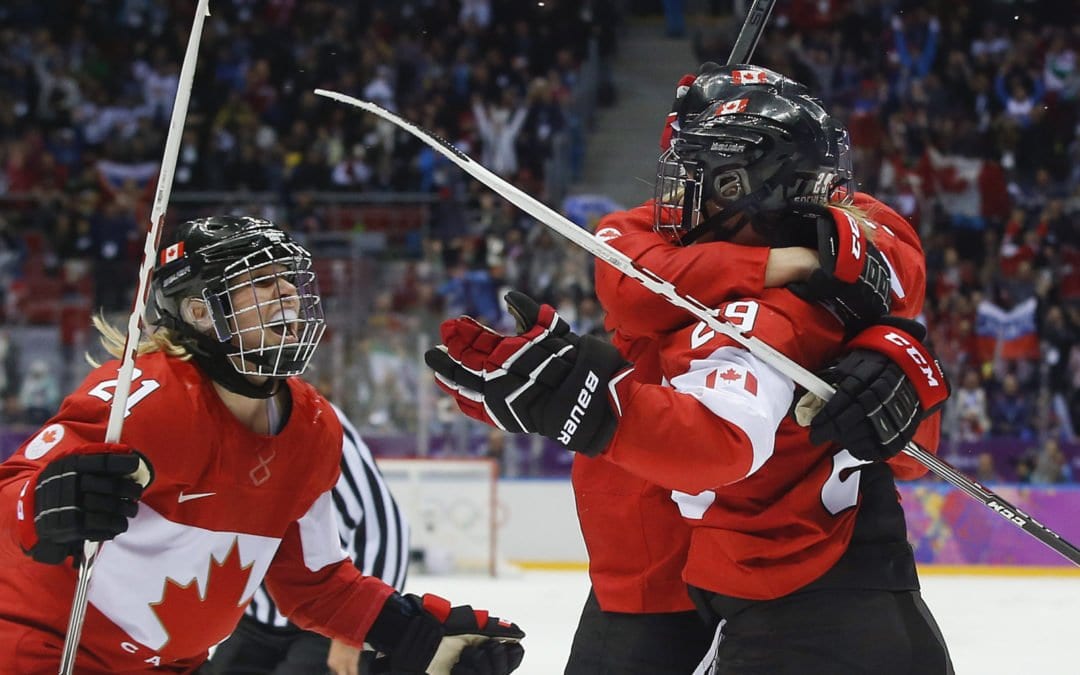Striving for Gender Equality in Canadian Hockey
If you look at any professional sport throughout the course of history, the competitions which have always been publicized and televised are the men’s games. Even today, men’s soccer, basketball, football, etc. are way more popular than the women’s leagues of the same sports. And, of course, the same goes for the sport of hockey. This sort of gender bias even takes place at the minor level of hockey: boys’ leagues for minor hockey are vastly more popular than girls’, mostly due to the unfortunate stigma that sports are rough and are better suited for boys.
Although, there has been a significant effort over the past few decades to promote women’s involvement in sports, especially in hockey, both to the women interested in playing the sport and the potential audience for watching it. This effort aims to break down the stigma that sports are only for boys, and that professional women’s sports can be just as entertaining to watch and just as skillful as their counterpart gender.
In society today, equality is a very hot topic of discussion, and is the focus for a lot of social justice in the form of racial equality, sexual equality, gender equality, etc. So, the movement to make women’s sports, especially hockey, more popular is fantastically timed, and exactly what the world of competitive sports needs. Besides, one of the main principles behind organized sports is the idea of inclusion, so that everyone, no matter their age, skill level, or gender feel comfortable joining in on the fun.
The History
The first ever women’s ice hockey game was played in Ottawa way back in 1891, over 120 years ago. Professional women’s hockey teams began to pop up across the country starting as early as the 20’s. However, minor hockey for girls took a lot longer to receive the same type of development that professional women’s hockey did.
Today, all-girl’s leagues in minor hockey are growing boundlessly across Canada. A couple dozen years ago, girls that wished to play hockey had to participate as part of an otherwise all male team. Regardless of the female’s skill level, they would usually be outcast by the rest of the team merely for being a different gender. The idea of having to play on a team of mostly men, coupled with the assumption that they were going to be ostracized anyway, wasn’t ideal for many girls who desired to play hockey. That was one of the main reasons why girls’ numbers in hockey paled in comparison to boys’.
While these “mixed gender” leagues still exist in some smaller cities and towns across Canada, most areas nowadays host their own exclusive girls’ hockey leagues.
The Movement for Gender Equality
There were a few University women’s hockey teams competing across Canada from about 1920 – 1970. But in 1970, the movement toward gender equality in hockey began. All-female hockey teams were forming across the world, in Canada, North America, and in countries as remote as Sweden, Japan, and Norway, to name a few.
This development wasn’t easy, however. It faced a lot of road blocks and criticism from established sports personalities and a lot of the public who had been used to sports being an all-male affair. Many people held the skewed belief that only men could achieve the highest standards of performance in sports, and that the women’s divisions would be less competitive or boring. But the women interested in playing sports were determined to prove that stigma wrong, and over time, they did.
Despite many doubts, the movement for equality in sports continued throughout the rest of the 20th century, when in 1998, women’s hockey was introduced to the Olympics, giving the world the opportunity to see that women’s hockey could be just as entertaining and competitive as the men’s leagues.
In 2002, 2010, and 2014, both the men’s and women’s Canadian Olympic hockey teams took home gold medals at the Winter Olympics, which all provided great displays of the true skill and potential for female hockey in Canada.
Conclusion
While Canada has certainly made excellent strides toward achieving gender equality in hockey, there are still many areas to be improved upon. First, body-checking is prohibited in women’s hockey, a rare case where the rules for a sport vary depending on the gender of the league. The fanbase for the NWHL (National Women’s Hockey League) is also much smaller than that of the NHL.
This contributes to the most unfortunate inequality of Canadian women’s hockey: Players in the NWHL are paid much less than the male league counterpart. It is often the case that NWHL players must work a full or part-time job alongside their hockey career to be able to make enough money.
So, again, even though a lot of progress has been made toward equality in hockey, we still have a long way to go. However, as the issue of gender equality in general becomes more and more popular, there is little doubt that Canada will be able to achieve the goals of fair treatment of women in Canadian hockey.


